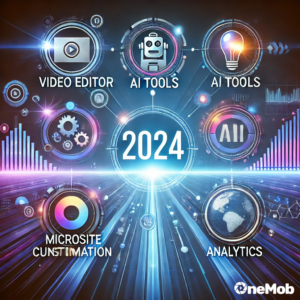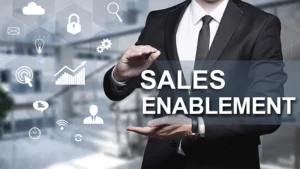Marketing gurus predicted 2015 to be the year of video marketing, and they were right. With 96% of B2B marketers using video in their marketing strategy, video has proven to be the most engaging form of content. So engaging, that it has made it’s way into email marketing, content marketing, social SEO and demand-generation programs to help marketers improve results, increase brand awareness and strengthen customer relationships. But video is not just for marketers. Quickly catching on in the sales, customer success, support and human resources sectors, the momentum behind video is quickly picking up in 2016. So if you aren’t using video now, you sure as hell should be.
Here are 3 reasons why you need to make video a part of your arsenal this year, no matter who you are.
1. Video is THE Most Engaging form of Content
With nearly 200 million internet users now consuming online video each day, one thing is obvious- that video is the most engaging form of content. While YouTube has been the long standing dominator of digital video, consumption has extended into social media, with channels like Facebook, Instagram and Snapchat creating their own audiences. That’s why in 2015 we saw Facebook hit 8 billion daily video views and Snapchat earn another 6 billion views. With each platform racing to innovate with new ad formats and attractive features, video is now omnipresent in our digital experience. Regardless of the nature of their content; whether they be high quality productions or personally recorded messages, video is clearly capturing audience’s attentions.
To no surprise, video has made its way into the world of B2B, with 93% of marketers using video for online marketing, sales or communication. Not only is visual content more engaging, but it’s provenly profitable- in fact, 52% of marketing professionals worldwide name video as the type of content with best ROI. But the success isn’t limited to marketing, as video is quickly becoming an instrumental part in sales and customer experience in 2016.
2. Enter Into the Next Phase of Digital Sales
In very recent years, we’ve seen social media take its place in the sales space. Twitter and LinkedIn have proven valuable for sales reps to connect in non-traditional ways; cue the typical break in scenario in which the sales rep finds that he and his prospect share the same alma mater. While those channels help to facilitate a connection before the first email is sent, the opportunity to share diverse forms of content is even more prominent. Call it “sales enablement 4.0” or whatever you want, but in the next wave of social selling, video will be a major game changer by increasing the value of your content and your efforts. This is already underway, with 56% of B2B sellers indicating that sales results have been positively impacted by using video.
3. Deliver and Capture a Great Customer Experience
With buyers gaining more autonomy and knowledge of a product on their own, buying on complete viewability will become the norm in 2016. Buyers will make decisions based on their knowledge and perception of not only a company’s product, but of their experience with it as well. Take Uber for example. Instead of taking a taxi, most people now would rather wait longer for their car to arrive and even pay more. Why? Because they know what their experience and transaction will be like based on previous experiences, and are willing to pay for convenience. In fact, 55% of customers would pay extra to guarantee better service. This knowledge has become a major motivation, with Gartner predicting that 89% of companies will compete mainly on experience, and that the experience itself is now part of decision-making criteria.
So how can companies best capture this experience, and be sure that they are delivering a seamless one to their prospects and clients? How can they be better at answering questions, offering support, on boarding, etc? When it comes to making a choice, what will make customers think about their experience with you and your product? Video will help deliver that great customer experience and ultimately build relationships, reminding clients why they want to keep coming back, year after year.
4. Tie Effort to Results
In the past, the majority of brands looked to free sites like YouTube and Vimeo to host their digital content. We’ve cautioned against this for a few reasons, the first being that these free hosting sites are impersonal. YouTube is better suited to entertain the masses, not to deliver an individual message. Remember what we said about the importance of providing an optimal customer experience? The same idea applies when watching and interacting with a video. The type of video doesn’t matter- the medium itself has already proven effective. What matters now is the viewing experience. When you turn your digital assets to Youtube, all control on your end is vanquished. Unsupported content, comments and the inability to add additional content make it more of an open forum then a one-on-one conversation. Even when hosted privately, the only data that is supplied to you is the number views or watches, which is why Marketing professionals predicted 2016 to be the year that “views” becomes an irrelevant statistic.
While the use of video for B2B sales and marketing is prevalent, the inability to accurately measure results, whether it be engagement or ROI, is a major reason why companies struggle to justify making a greater investment in video. Since video has traditionally been used in content marketing and generating brand awareness, measuring the actual ROI that video marketing efforts deliver has been cited as the biggest challenge by marketers. But with 73% of marketers saying video has positively impacted their results, and another 56% seeing the impact in sales, the benefits are undeniable. Ultimately, what we need to know is not how many watches our videos are getting, but if those videos are actually helping close deals and make renewals.
Conclusion
In 2015, we saw the influence of online video skyrocket, both in our personal and professional lives. Video found crazy success in marketing, with sales and customer support quickly catching up. No, we’re not saying that reps are going to start Snapchatting their prospects in 2016, but even that doesn’t sound entirely impossible. While we looked to video to help us engage in 2015, 2016 will be the year where we’ll measure engagement, and its impact on our business. And as video’s influence continues to grow in the coming years, professionals will look beyond the content itself, and into the experience surrounding it.
With these ideas in mind; engaging with video, creating optimal user experiences and measuring analytics, businesses will look beyond free video hosting sites to maintain their digital assets. With OneMob, reps can host, distribute and track all their videos with complete control. So stop turning over your video assets to the Wild Web, and contact us to see how you can control the way you connect.






